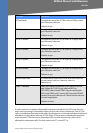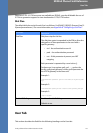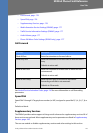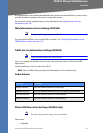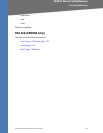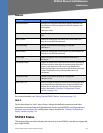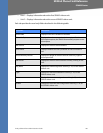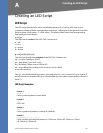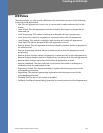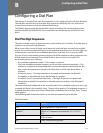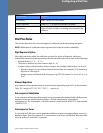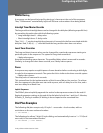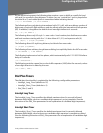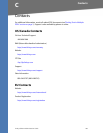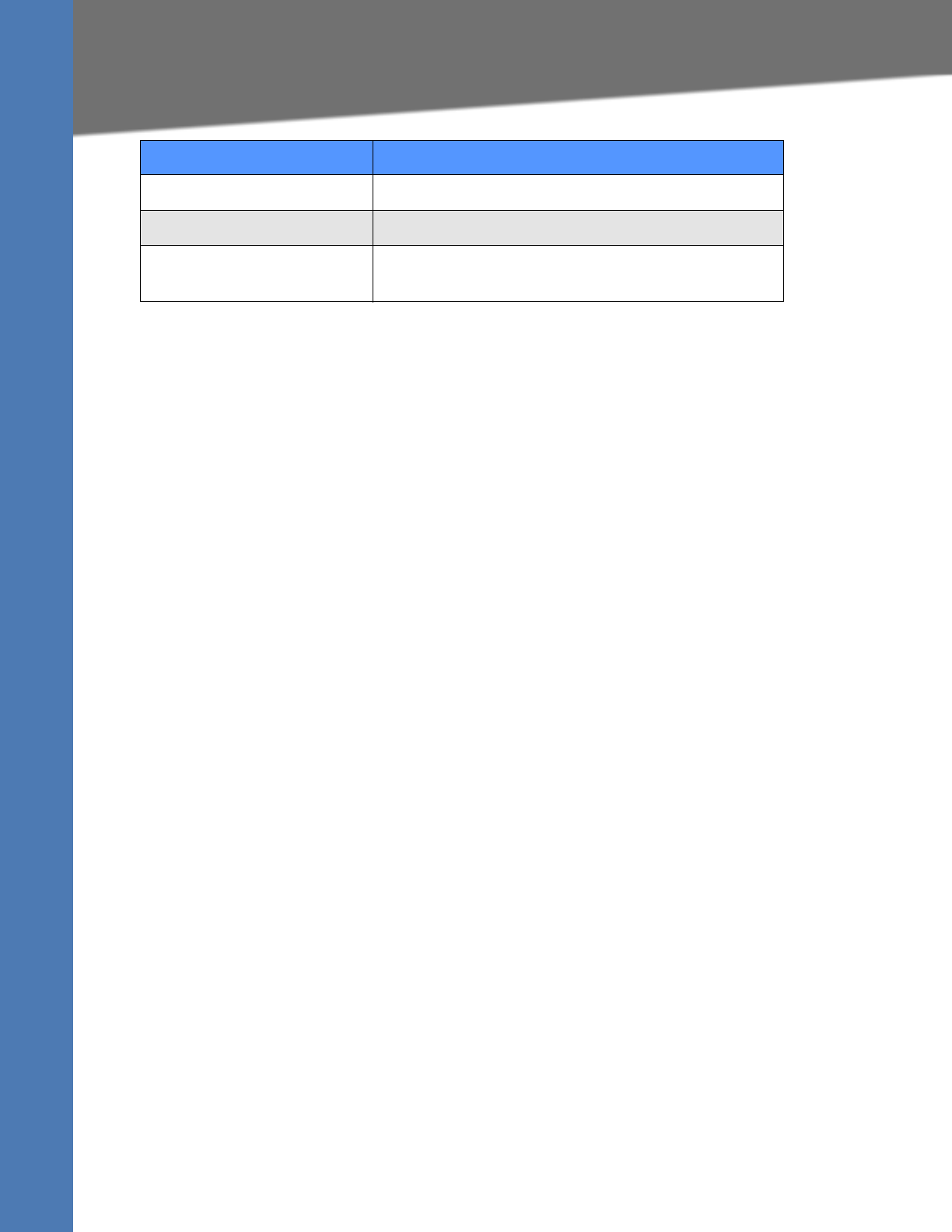
Linksys SPA9x2 Administration Guide 184
Configuring a Dial Plan
Dial Plan Rules
This section describes the rules that apply to configuring and interpreting dial plans.
NOTE: White space in a dial plan script is ignored, but it may be used for readability.
Digit Sequence Syntax
Each digit sequence within the dial plan consists of a series of elements, which are
individually matched to the keys pressed by the user. Elements can be one of the following:
• Individual keys 0, 1, 2 . . . 9, *, #.
• The letter x matches any one numeric digit (0 .. 9)
• A subset of keys within brackets (allows ranges): for example, [389] means 3 or 8 or 9)
– Numeric ranges (n-n) are allowed within the brackets: for example, [2-9] means any
digit from 2 through 9)
– Ranges can be combined with other keys: e.g. [235-8*] means 2 or 3 or 5 or 6 or 7 or
8 or *.
Element Repetition
Any element can be repeated zero or more times by appending a period (.) to the element.
Thus, “01.” matches “0”, “01”, “011”, “0111”, … and so on.
Sub-sequence Substitution
A sub-sequence of keys (possibly empty) can be automatically replaced with a different sub-
sequence using an angle bracket notation: < dialed-subsequence : transmitted-
subsequence >. So, for example, “<8:1650>xxxxxxx” would match “85551212” and transmit
“16505551212”.
Intersequence Tones
An “outside line” dial tone can be generated within a sequence by appending a comma (,)
between digits. Thus, the sequence “9, 1xxxxxxxxxx” sounds an “outside line” dial tone after
the user presses 9, until the 1 is pressed.
[2-9]xxxxxx Dials 7-digit US local number
1xxx[2-9]xxxxxx Dials US 1 + 10-digit long distance number
xxxxxxxxxx. Dials all other numbers, including international long
distance
Dial Plan Entry
Function



